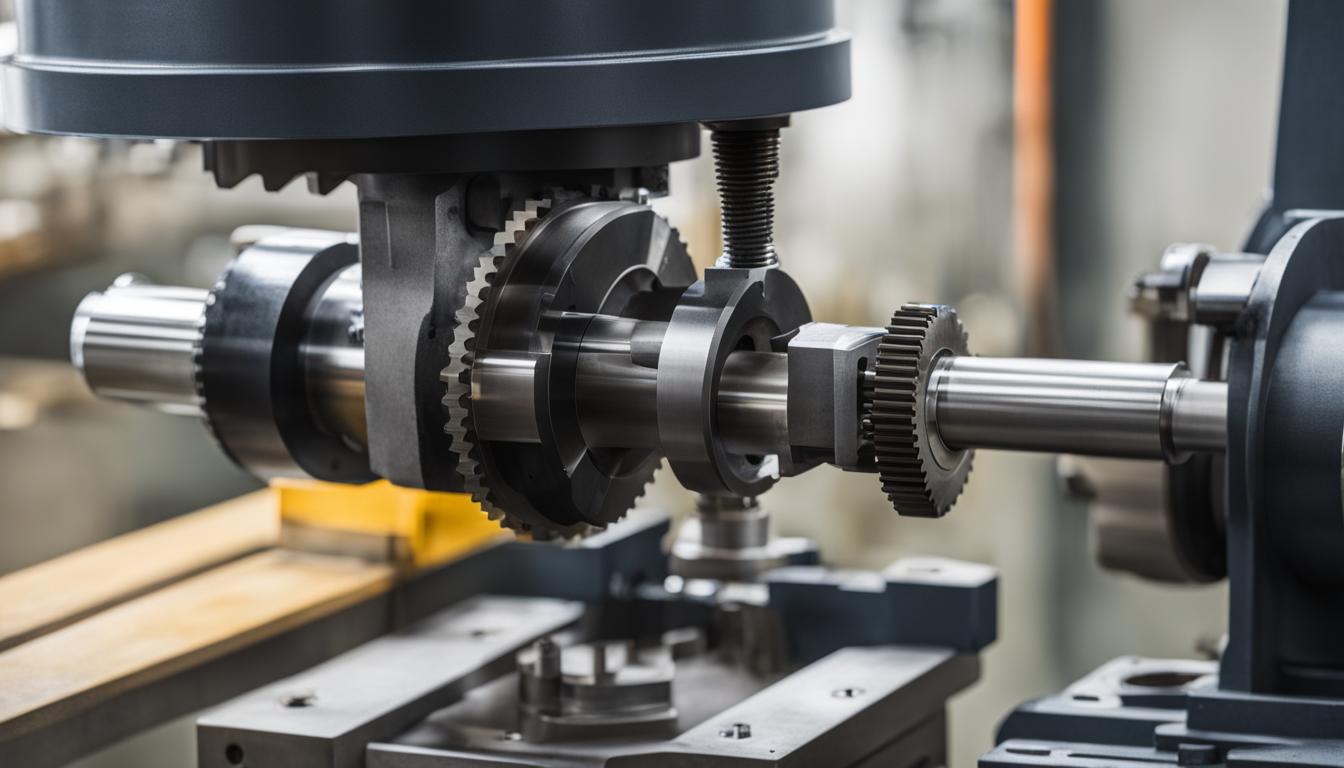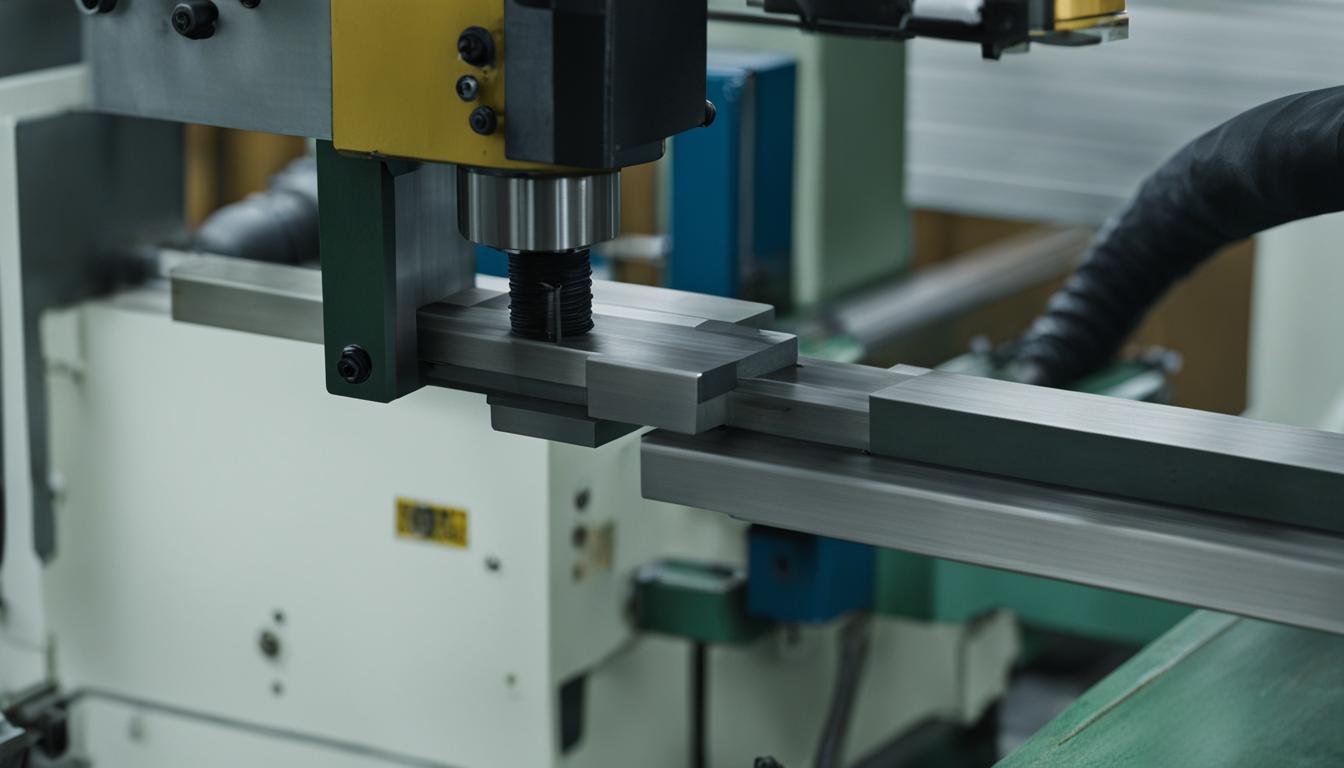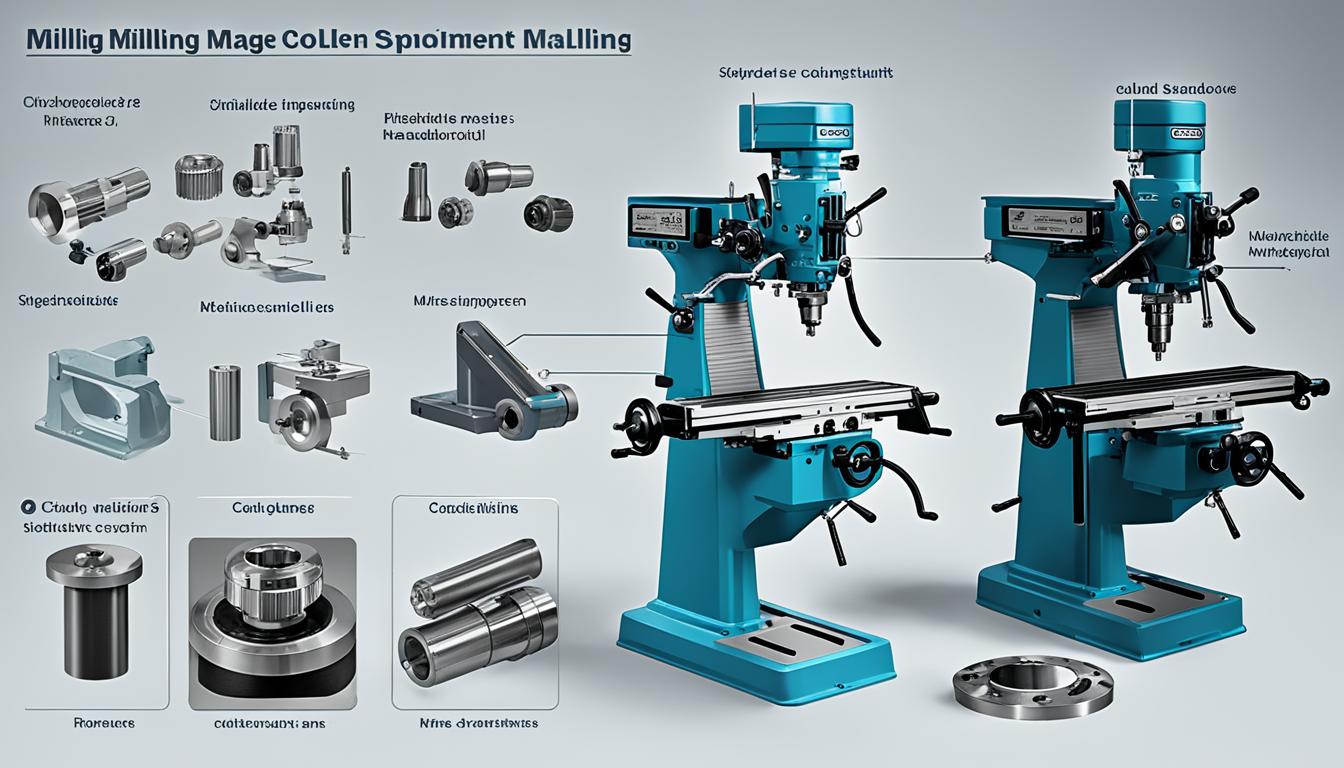A milling machine consists of several key components that work together to perform precise cutting and shaping operations. The main parts include the base, column, knee, saddle, table, spindle, and cutting tools. The base provides a sturdy foundation for the entire machine, while the column supports the knee and houses the drive mechanism. The knee moves vertically along the column, allowing for height adjustments.
The saddle sits atop the knee and moves horizontally, carrying the worktable. The table holds the workpiece and can move in multiple directions for precise positioning. The spindle, located in the machine’s head, rotates the cutting tool at high speeds. Various cutting tools, such as end mills, face mills, and drill bits, can be attached to the spindle to perform different machining operations.
Additional components may include the quill, which allows for fine vertical adjustments of the cutting tool, and the control panel, which manages the machine’s operations and settings. Understanding these parts and their functions is crucial for efficient and safe operation of a milling machine.
- The milling machine is a powerful tool used for cutting and shaping metals.
- Understanding the anatomy and functions of its various parts is essential for efficient and precise machining.
- The column and base provide support and stability to the machine.
- The knee and saddle allow for vertical and horizontal movement of the workpiece.
- The power feed mechanism enables control over the feeding directions.
Column and Base
The column and base are crucial components of a milling machine, providing essential support and stability to the entire machine during operation. Let’s take a closer look at these components and understand their role in the milling process.
Column
The column is the primary structural element of the milling machine. It is a vertical pillar that houses and supports the moving parts of the machine, such as the spindle, knee, and saddle. Made from durable materials like cast iron, the column ensures the stability and rigidity necessary for precise milling operations.
Base
The base of the milling machine serves as its foundation, providing a stable platform to support the entire machine’s weight. Typically made of cast iron, the base absorbs vibrations generated during the milling process, preventing any unwanted movement that could affect the accuracy of the machining operations.
| Key Features | Column | Base |
|---|---|---|
| Material | Cast iron or steel | Cast iron or steel |
| Function | Houses moving parts and provides support | Serves as a foundation and absorbs vibrations |
| Stability | Ensures machine rigidity during operations | Prevents unwanted movement and maintains stability |
With a robust column and a sturdy base, a milling machine can effectively withstand the forces generated during cutting and milling processes. These components form the core structure of the machine, ensuring its reliability and precision.
In the image above, you can see how the column and base provide a solid support system for the milling machine. They form the foundation that allows for accurate and efficient milling operations.
Knee and Saddle
One of the essential components of a milling machine is the knee, which plays a crucial role in supporting and adjusting the saddle and table. The knee is a vertical positioning screw that allows for vertical movement and adjustment of the workpiece.
Attached to the knee is the saddle, which provides support to the table. The saddle enables horizontal movement in both directions, allowing for precise positioning of the workpiece during the milling process.
Together, the knee and saddle form a pivotal part of the milling machine, facilitating both vertical and horizontal movement for accurate and efficient machining operations.
Power Feed Mechanism
The power feed mechanism is an essential component of a milling machine, located in the knee. It enables precise control over the movement of the workpiece during the milling process. With the power feed mechanism, operators can adjust the longitudinal (left and right), transverse (in and out), and vertical (up and down) feeds according to their machining requirements.
The longitudinal feed, also known as the X-axis feed, controls the left and right movement of the workpiece. This feed allows operators to make precise horizontal cuts and create uniform surfaces. By adjusting the longitudinal feed, they can achieve the desired dimensions and finishes on the machined parts.
The transverse feed, or the Y-axis feed, determines the in and out movement of the workpiece. It allows operators to position the cutting tool accurately and create complex shapes by moving the workpiece perpendicular to the cutter’s rotation. The transverse feed plays a crucial role in achieving intricate milling operations and precise results.
The vertical feed, also referred to as the Z-axis feed, controls the up and down movement of the workpiece. It enables operators to control the depth of cut and adjust the machining level according to their requirements. By manipulating the vertical feed, they can create various features, such as pockets, holes, and slots, with different depths and dimensions.
Overall, the power feed mechanism empowers operators with the ability to precisely control the movement of the workpiece in multiple directions. This control allows for accurate and efficient milling operations, resulting in high-quality machined parts.

Table and Spindle
In a milling machine, the table and spindle are essential components that play crucial roles in the machining process. Let’s explore their functions and characteristics in detail.
Table
The table is a rectangular casting located on top of the saddle, which is attached to the knee. It provides a flat and stable surface for securing the workpiece during milling operations. Typically made from high-quality materials like cast iron, the table ensures stability and accuracy in holding the workpiece in place.
The milling machine table is adjustable and can move in all three axes – X, Y, and Z – allowing for precise positioning of the workpiece. This adjustability and stability of the table make it possible to achieve accurate cuts and shapes with exceptional control and repeatability.
Furthermore, the table usually has T-slots or other fixtures that allow for the attachment of various workholding devices, such as vises, clamps, or rotary tables. These additions enhance the versatility of the milling machine, enabling the machining of complex geometries and multiple workpieces.
Spindle
The spindle is the shaft that holds and drives the cutting tools used in the milling machine. It is responsible for rotating the cutting tools, providing the necessary cutting speed and power for effective material removal and shaping.
Typically located in the milling machine’s head, the spindle can rotate at different speeds, allowing for the use of various cutting tools and accommodating specific machining requirements. The spindle speed is adjustable, helping to optimize cutting performance for different materials and cutting conditions. It is controlled by the milling machine’s speed selection mechanism.
Spindles in milling machines may have different types of tool holders, such as collets, end mill holders, or drill chucks. These tool holders securely grip the cutting tools, ensuring stability and precision during machining.
The spindle is an integral part of the milling machine that heavily influences its capabilities and performance. The selection of the appropriate spindle and cutting tools is crucial in achieving desired results, including dimensional accuracy, surface finish, and overall productivity.
Image:
| Table | Spindle |
|---|---|
| Provides a flat and stable surface for securing the workpiece | Holds and drives the cutting tools |
| Adjustable in X, Y, and Z axes for precise positioning | Rotates at different speeds to accommodate various cutting tools |
| Has T-slots for attaching workholding devices | May have different types of tool holders for gripping cutting tools |
Over Arm and Arbor Support
The over arm and arbor support are essential components of a milling machine that contribute to its stability and versatility. Let’s take a closer look at these components and their functionalities.
Over Arm
The over arm is a horizontal beam that runs along the length of the column’s top face. It provides additional support and stability to the milling machine, ensuring smooth and accurate machining operations. The over arm helps to minimize vibrations and flexing that can occur during the milling process, resulting in precise and consistent cuts.
Moreover, the over arm enables the attachment of various milling machine accessories and attachments, expanding the machine’s capabilities. This allows operators to customize their milling setup according to their specific machining requirements.

Arbor Support
The arbor support is a casting equipped with a bearing that supports the outer edge of the arbor. It plays a crucial role in aligning the arbor’s outer end with the spindle, ensuring accurate rotation of the cutting tool. The arbor support enhances the overall stability of the milling machine, reducing the risk of vibrations that can affect the quality of the machined workpiece.
Additionally, the arbor support enables the use of different milling machine attachments, such as horizontal milling attachments, angular attachments, and more. These attachments further enhance the versatility of the milling machine, allowing operators to perform a wide range of machining operations with efficiency and precision.
Ram
The ram is an integral part of a vertical milling machine, acting as an overhanging arm that extends vertically from the top of the column. It provides crucial support and stability to the machine, allowing for precise machining operations. The ram plays a vital role in the adaptability of the machine to a variety of workpiece configurations and sizes.
With its vertical movement, the ram enables the vertical mill to accommodate different cutting depths and workpiece heights, making it a versatile tool in precision machining. This flexibility allows operators to achieve the desired results with ease and accuracy.
The ram, along with other essential components like the spindle and table, contributes to the overall functionality and effectiveness of the vertical milling machine. Its inclusion in the machine’s design enhances its capabilities and ensures optimal performance in various metalworking applications.
